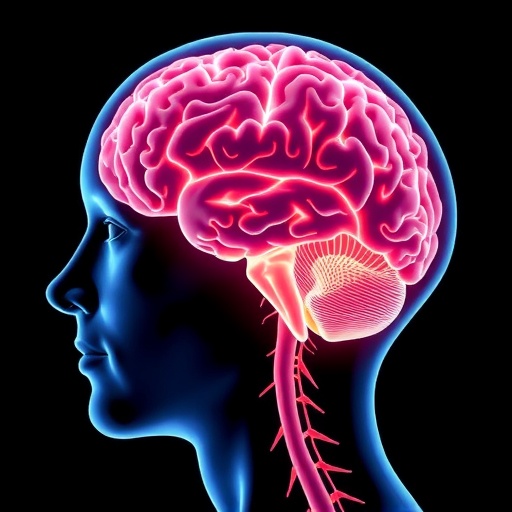Neurogenic organ dysfunction syndrome (NODS) is an emergent condition that has garnered significant attention within the medical community, largely due to its implications following acute brain injury. Recent research has propelled this syndrome into the limelight, particularly a groundbreaking study conducted by Zhang et al., which meticulously explores the multifaceted effects of neurogenic organ dysfunction. This study, published in “Military Medical Research,” breaks new ground in understanding how the complexities of brain injuries can precipitate systemic organ dysfunction, offering insights that could transform medical approaches in acute care settings.
Acute brain injuries, which can stem from various sources including trauma, stroke, and hypoxia, often lead to severe neurological deficits. However, the repercussions of such injuries extend far beyond the brain; they can precipitate a cascade of pathophysiological changes that impact multiple organ systems. Zhang and colleagues’ research demonstrates that the neurological insult can activate a network of inflammatory processes and neural pathways, ultimately resulting in a dysfunction of vital organs such as the heart, lungs, kidneys, and liver.
The study provides a rigorous analysis of the mechanisms through which acute brain injury induces NODS. One of the pivotal revelations is the role of the autonomic nervous system, particularly in the regulation of cardiovascular and renal functions. The disruption of neural control following brain injuries can lead to cardiovascular instability, which in turn complicates the recovery trajectory of these patients. With quantitative data and case studies, the research highlights how fluctuations in cardiac output and blood pressure can be traced back to neurogenic influences, reinforcing the necessity for multidisciplinary approaches in treating affected patients.
Furthermore, Zhang et al. emphasize the significance of understanding the inflammatory response triggered by brain injuries. The research meticulously details how microglial activation and the release of inflammatory cytokines can have far-reaching effects on organ systems, elaborating on the systemic nature of NODS. This inflammatory cascade is often underestimated in its severity and persistence, and the study calls for a reevaluation of therapeutic strategies that might be employed to mitigate these inflammatory responses as they pertain to organ dysfunction.
In addition to the inflammatory component, the research also touches on the role of metabolic derangements resulting from acute brain injury. For instance, changes in glucose metabolism can lead to detrimental effects on organ function. The study delineates how hypoglycemia or dysglycemia, both of which may accompany brain injury, can exacerbate organ dysfunction, making glycemic control a crucial component of patient management. This interrelationship underscores the necessity for comprehensive monitoring of metabolic parameters alongside neurological assessments.
The implications of these findings are vast. Healthcare practitioners must recognize that treating a patient with an acute brain injury requires vigilance not only in neurology but across various medical disciplines. The identification of NODS as a potential complication necessitates the establishment of protocols aimed at early detection and intervention. Successful management hinges on understanding the interconnectedness of the body’s systems—a holistic viewpoint that resonates with contemporary practices in integrative medicine.
Moreover, the research by Zhang et al. paves the way for future investigations into targeted treatments for NODS. Identifying potential pharmacological interventions or therapies that specifically address neurogenic inflammation could become pivotal in improving patient outcomes. As evidenced by the findings, anti-inflammatory agents or neuroprotective treatments offer promise in curtailing the impact of systemic dysfunction post-brain injury.
It is imperative to consider the long-term ramifications that NODS can impose on survivors of acute brain injuries. The study reveals that outcomes are not solely dictated by the initial injury but can be significantly altered by the advent of NODS. Chronic complications may arise, and there exists the potential for diminished quality of life and long-term rehabilitation needs. This aspect is especially relevant within military settings, where instances of brain injury may persist and require sustained attention from healthcare providers.
Ethical considerations also emerge from this research. As physicians grapple with the challenges of treating complex cases of NODS, a focus on patient-centered care becomes increasingly critical. Open communication about potential complications with patients and families can enhance the decision-making process and ensure alignment with individual patient values and preferences. This transparent approach is crucial in fostering trust and respect within the patient-provider relationship.
The study not only highlights the challenges that NODS presents but also emphasizes the significance of continued education and training for medical professionals. Understanding the psychosocial components associated with brain injuries and their repercussions can bridge the gap between bedside care and long-term recovery strategies. Thus, ongoing education initiatives could evolve to encompass training on the interdisciplinary management of NODS.
As interest in neurogenic organ dysfunction syndrome grows, the discourse surrounding its management will surely advance. The landscape of acute brain injury treatment is evolving, and research like that of Zhang et al. serves as a critical foundation for these developments. As new insights emerge and methodologies are refined, the possibility of enhancing patient outcomes becomes increasingly tangible.
In light of these findings, the medical community is urged to prioritize research focusing on both the immediate and long-term implications of neurogenic organ dysfunction syndrome. The intricacies of this syndrome serve as a reminder of the highly interconnected nature of human physiology, wherein a singular event can ripple across multiple bodily systems, necessitating a comprehensive approach to treatment.
Neurogenic organ dysfunction syndrome challenges current paradigms within critical care medicine. As we shift our understanding of brain injuries not just as isolated neurological events but as incidents with far-reaching consequences, healthcare providers must adapt to these complexities. Zhang et al.’s research lays a crucial groundwork for future exploration, ultimately advocating for a system-oriented perspective in treating patients with acute brain injuries, thereby enhancing recovery and quality of life in an often-overlooked aspect of trauma care.
With the publication of this enlightening research, the potential for integrated treatment frameworks that address both neurological and systemic aspects of brain injuries seems more attainable than ever. In moving forward, collaboration across disciplines, transparency in communication, and a focus on patient-centered care will be essential in ushering in a new age of effective management for neurogenic organ dysfunction syndrome.
Subject of Research: Neurogenic organ dysfunction syndrome after acute brain injury
Article Title: Neurogenic organ dysfunction syndrome after acute brain injury
Article References:
Zhang, H., Chen, WJ., Chao, YG. et al. Neurogenic organ dysfunction syndrome after acute brain injury.
Military Med Res 12, 77 (2025). https://doi.org/10.1186/s40779-025-00662-8
Image Credits: AI Generated
DOI: https://doi.org/10.1186/s40779-025-00662-8
Keywords: Neurogenic organ dysfunction, acute brain injury, inflammation, systemic dysfunction, cardiovascular stability, multidisciplinary approach, patient-centered care, quality of life.
Tags: acute brain injury consequencesacute care approaches for brain injuriesautonomic nervous system and organ dysfunctionhypoxia-induced organ dysfunctionimplications of acute brain injuriesinflammatory processes in NODSmechanisms of neurogenic organ dysfunctionmulti-organ failure after strokeNeurogenic Organ Dysfunction Syndromeneurological deficits following traumasystemic organ dysfunction after brain injuryZhang et al. study on NODS





